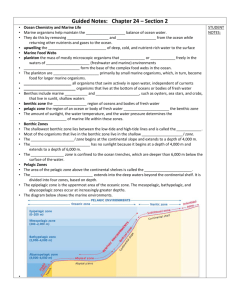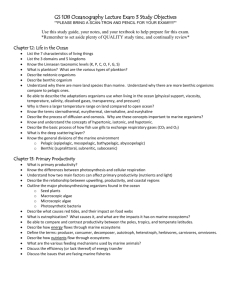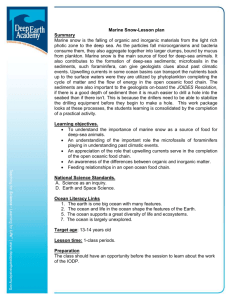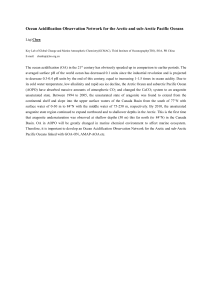oceanic zone
advertisement
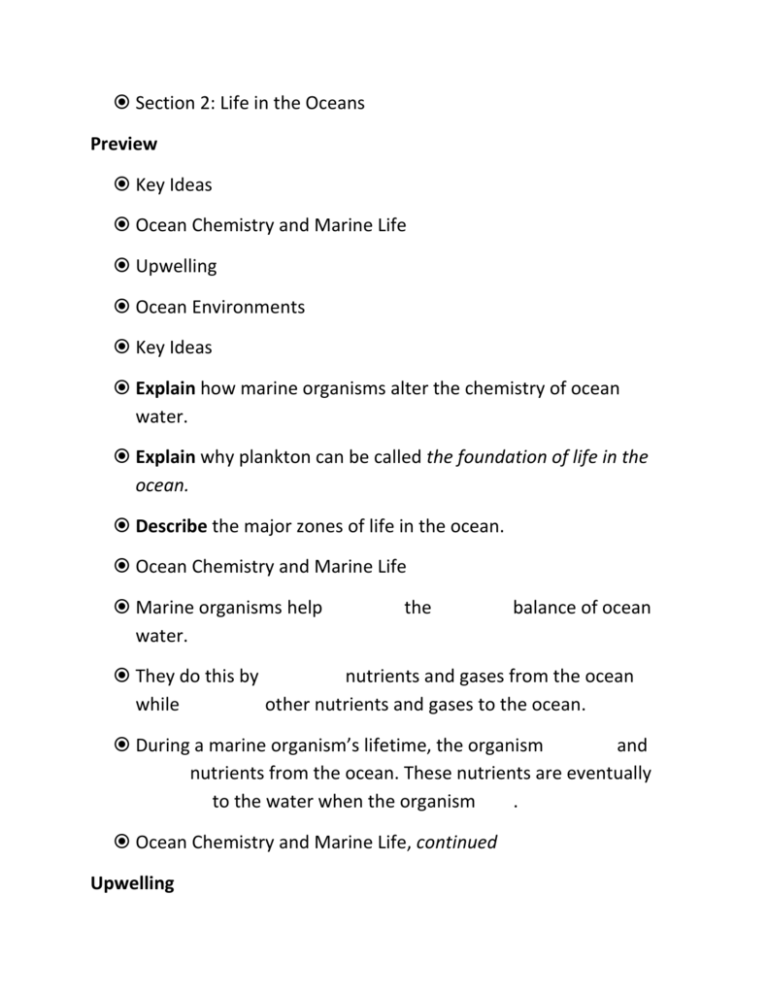
Section 2: Life in the Oceans Preview Key Ideas Ocean Chemistry and Marine Life Upwelling Ocean Environments Key Ideas Explain how marine organisms alter the chemistry of ocean water. Explain why plankton can be called the foundation of life in the ocean. Describe the major zones of life in the ocean. Ocean Chemistry and Marine Life Marine organisms help maintain the chemical balance of ocean water. They do this by removing nutrients and gases from the ocean while returning other nutrients and gases to the ocean. During a marine organism’s lifetime, the organism absorbs and stores nutrients from the ocean. These nutrients are eventually returned to the water when the organism dies. Ocean Chemistry and Marine Life, continued Upwelling In general, all of the elements necessary for life are consumed by organisms near the surface. Elements are then released back into the ocean water when organisms die, sink to lower depths, and decay. Thus, deep water is a storage area for nutrients needed for life. upwelling the movement of deep, cold, and nutrient-rich water to the surface Upwelling Ocean Chemistry and Marine Life, continued Marine Food Webs plankton the mass of mostly microscopic organisms that float or drift freely in the waters of aquatic (freshwater and marine) environments Plankton form the base of the complex food webs in the ocean. The plankton are consumed primarily by small marine organisms, which, in turn, become food for larger marine organisms. Ocean Chemistry and Marine Life, continued Marine Food Webs, continued The larger animals that consume plankton fall into two groups. nekton all organisms that swim actively in open water, independent of currents benthos organisms that live at the bottom of oceans or bodies of fresh water Benthos include marine plants and animals, such as oysters, sea stars, and crabs, that live in sunlit, shallow waters. Ocean Environments benthic zone the bottom region of oceans and bodies of fresh water pelagic zone the region of an ocean or body of fresh water above the benthic zone The amount of sunlight, the water temperature, and the water pressure determines the distribution of marine life within these zones. Ocean Environments, continued Benthic Zones The shallowest benthic zone lies between the low-tide and hightide lines and is called the intertidal zone. Most of the organisms that live in the benthic zone live in the shallow sublittoral zone. The bathyal zone begins at the continental slope and extends to a depth of 4,000 m. Ocean Environments, continued Benthic Zones, continued The abyssal zone has no sunlight because it begins at a depth of 4,000 m and extends to a depth of 6,000 m. The hadal zone is confined to the ocean trenches, which are deeper than 6,000 m below the surface of the water. Reading Check Which benthic zone has the most marine life? Why? Most marine life is found in the sublittoral zone. Life in this zone is continuously submerged, but waters are still shallow enough to allow sunlight to penetrate Ocean Environments, continued Pelagic Zones The area of the pelagic zone above the continental shelves is called the neritic zone. The oceanic zone extends into the deep waters beyond the continental shelf. It is divided into four zones, based on depth. The epipelagic zone is the uppermost area of the oceanic zone. The mesopelagic, bathypelagic, and abyssopelagic zones occur at increasingly greater depths. Ocean Environments, continued The diagram below shows the marine environments.

